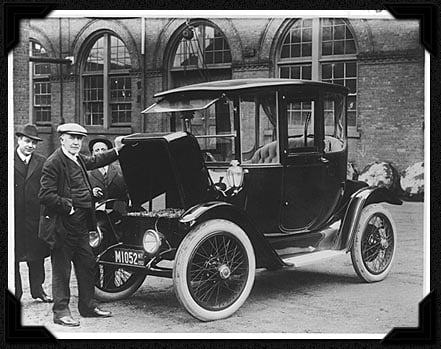National Drive Electric Week is, for the sixth time in a row, hitting the road in force, returning this year in September for one solid week and then some, beginning Sept. 10th and running through the 18th.
“Each year, Plug In America, the Sierra Club and the Electric Auto Association team up with local groups to organize events, which typically feature all-electric and plug-in hybrid electric cars from every automaker on the market,” expressed Plug In America in its “Sixth Annual National Drive Electric Week: September 10-18, 2016” press release, dated June 15, 2016. “National Drive Electric Week events are linked to increased plug-in vehicle sales, which have jumped by as much as 23 percent the month after.”
This is an outstanding opportunity for anyone who has been on the fence about going the all-electric or plug-in hybrid route to talk to experts and other such vehicle owners, take test drives and learn more about what is available on the market as well as what these vehicles can offer buyers.
Under the hood
Development of electric vehicles (EV) has definitely come a long way.
In 2015 Americans drove a cumulative 3.148 trillion miles. Meanwhile, average motor vehicle fuel economy rating is 25.3 miles per gallon (mpg). Now, using a per-capita yearly vehicle miles traveled average of 9,363, dividing the latter by the former yields an average per-annum, per-vehicle gasoline consumption rate of about 370 gallons. So, with Americans collectively putting 3.148 trillion miles on the odometer, this more or less translates into a staggering combined total 124.427 billion gallons of fuel consumed by an estimated 253 million autos and trucks traversing America’s highways and byways in one year’s time.
The price of gasoline right at this moment in America on Labor Day weekend is an average $2.22 per gallon. Using this number, this means an annual expenditure of $276.228 billion shelled out to buy fuel.
Helpful indeed would be to look at comparative data.
To determine electric vehicle fuel-consumption equivalency, using my own cost for electricity of an average $0.24 per kilowatt-hour or $0.24/kWh (based on my charges from Jul. 12-Aug. 10, 2016), say, for example, that in order to go 100 EV miles would require 25 kWh-worth of battery charge (an estimate) and, providing I drove an EV, my cost would be $6 or a per-mile cost of $0.06.
Now, also, say, for example, the fuel-economy rating of the vehicle I do drive is 22.5 mpg, to go 100 miles would require 4.44 gallons of gasoline. At a cost of $2.22 per gallon, to drive that same distance would set me back roughly $9.86 – a little more than 1.5 times as much. If I were the typical driver, and to drive the average 9,363 per-capita vehicle travel miles, over a year’s time my car would consume 416.13 gallons of gas and my expenditure just for that alone would be $923.82, assuming, of course, that that per-gallon-of-gasoline price held steady.
On the other hand, an EV that requires 25 kWh of electricity to travel 100 miles, in driving at the average annual per-capita rate, provided the math is performed correctly, my total capital outlay for purchased electricity would equal $561.78 and this over the year. Moreover, maintenance costs for electric vehicles typically are just a fraction of what would be required to maintain your average internal-combustion-engine-powered motor-vehicle model.
So, with EVs, there is quite a savings to be had, meaning these vehicles pay for themselves sooner.
Adds Plug In America in the release: “The environmental and financial benefits combined with the growing convenience of electric vehicles, from longer ranges to expanding charging infrastructure, are causing a steady increase in use. Plug-in electric vehicles are selling at a faster pace than the first generation of hybrid cars. Even with significantly lower gas prices, EV sales were much higher in the first quarter of 2016 than they were in the first quarter of 2015.”
And, the best thing of all? It is that these vehicles don’t air-pollute which makes them zero-emissions vehicles in the truest sense of the term.
Measure of success
The success of National Drive Electric Week is obvious: Plug In America reports:
- 2013: 100 events in 34 states with over 30,000 participants
- 2014: 152 events in 38 states, five Canadian provinces and three European countries with over 95,000 participants
- 2015: 196 events in 41 states, seven Canadian provinces, Hong Kong and New Zealand with more than 130,000 participants and 9,000+ test rides
For more about National Drive Electric Week 2016, look here.

– Alan Kandel
Comments are closed.